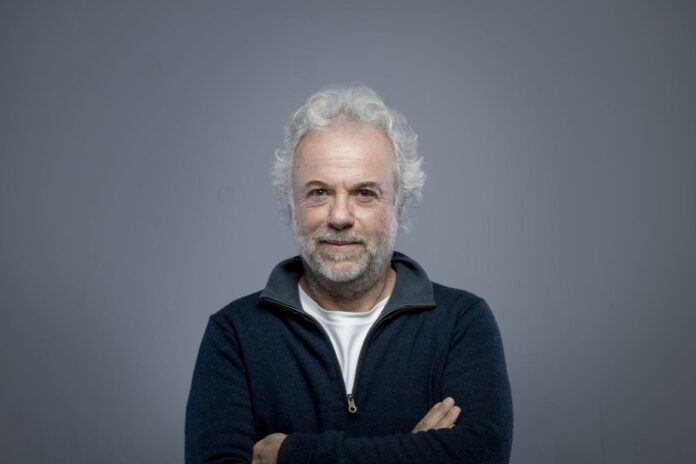He was right to have faith in his project: after 30 years of research and compilations, the philosopher and sociologist Frédéric Lenoir signed The Odyssey of the Sacred, a great historical fresco of belief since the dawn of time, completed by an analysis of this perpetual need for spiritual quest. A work that the author will have the opportunity to present to the Quebec public, since he will participate in conferences in Montreal at the end of November as well as at the Book Fair.
From the outset, the design of the work presents an assumed, even claimed, parallel with the famous Sapiens by Yuval Harari. But it is through the prism of the sacred that Frédéric Lenoir traces the history of humanity; a suggestion from his publisher, who suggested that he compose a “Spiritual Sapiens”, paving the way for a synthesis of his research on the subject carried out for years. With more than 520 pages, The Odyssey of the Sacred is divided into two parts, retracing the journey and mutations of spirituality through the centuries, then discussing the philosophical and sociological question “Why is the human being a spirit animal? “.
We thus attack the heart of the matter from the first chapter, with the relevant enigma of the appearance of the feeling of the sacred in Man, directly linked to the opacity of the “great final leap”.
“We saw the emergence among Neanderthals, then among Sapiens who greatly developed them, of symbolic practices showing that there were beliefs in the possibility of survival of the soul. For example, we will bury the dead in the fetal position, which suggests the possibility of rebirth, or with the head facing east, or with weapons and food,” explains Frédéric Lenoir.
The essay then crosses stages and eras, exploring ancient religions, then the spiritual revolution of universalist religions and philosophical currents (between 800 and 200 BCE), after a detour through the notions of magic and witchcraft, the rise of the major monotheistic currents, the impact of the Enlightenment, before arriving at the contemporary segment. So what would be the state of affairs? The author says he notes a dissociation of the spiritual and religious in the Western world, a refusal of the management of the sacred by collective organizations and a loss of confidence in them.
“But that absolutely does not prevent one from continuing to ask spiritual questions, to experience the sacred, to question the meaning of one’s life. The contemporary event is therefore this distancing which means that there are more and more individuals who are spiritual and not religious, even atheists, but also individuals who are religious without being spiritual, that is- that is to say for whom religion is just a collective identity, and we see this in a somewhat tragic way today,” he says.
With this overview of spiritual history, how does the philosopher foresee its evolution in the century to come? For him, the sacred as a universal feeling and questioning of meaning will continue its journey. It also anticipates two phenomena.
“We could also see the phenomenon of hardening religious identity continuing, particularly in other cultural areas, in reaction to the loss of bearings, to individualism, to materialism,” he continues. This could even create religious revivals in the West, but in different forms that we cannot yet imagine today, or even the birth of new religions. »
On the sidelines of the great global spiritual movements, certain very in-depth chapters of The Odyssey of the Sacred explore the spheres of esotericism and astrology. They teach us, for example, that the latter dates back to the invention of writing (planetary positions were noted from Antiquity to correlate them with terrestrial events), before being discredited by Cartesianism from the 17th century , exposing its scientific invalidity.
However, we have observed a renewed interest in predictions of all kinds in our societies in recent years. Questioned on this point, Frédéric Lenoir explains it by a transformation of astrology in the form of a “psycho-astrology”, equipped with a new language which speaks to the individual and offers him a photograph of his psyche. “In this sense, it responds to one’s need to feel connected to a living cosmos, to nature, to the Universe, to establish a link between the macrocosm and the microcosm,” he analyzes.
Another very enlightening section of the essay looks at beliefs examined through scientific lenses, including those of neuroscience and cognitive psychology. Research tells us that people driven by spiritual convictions are much more resilient in the face of life’s challenges. As for the human brain, we have detected an area called the cingulate cortex, absent in animals. “It would correspond to the need for meaning. The human being would be the only animal that needs to give it to its life, and it is perhaps this particularity in the brain which explains it. But this remains a question,” concludes the essayist.















